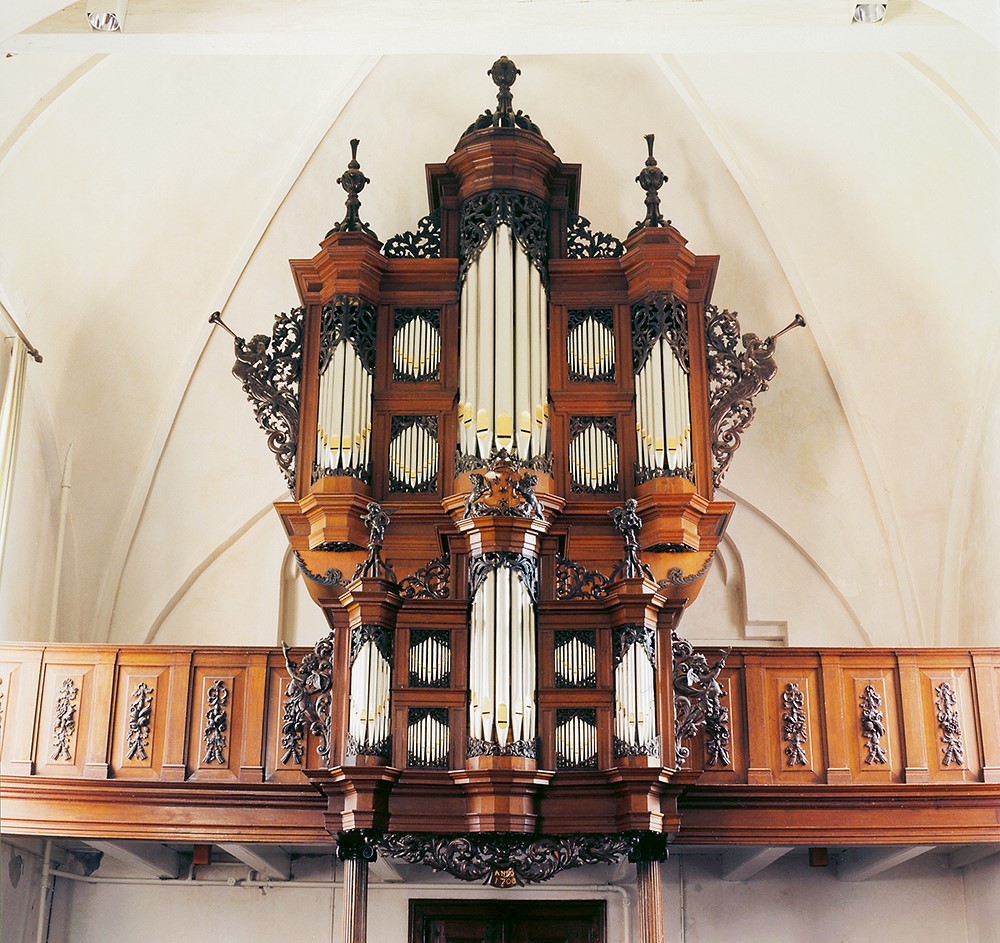Uithuizen, Jacobikerk
| Builder | A. Schnitger |
|---|---|
| Year | ca. 1701 |
| Period/Style | Baroque |
| Stops | 28 |
| Keyboards | 2+P |
| Keyaction | tracker/mechanical |
| Tuning | Valotti |
The village of Uithuizen, tracing back to the eleventh century, evolved from an agricultural center to a central hub for surrounding villages. Its historic church, dating from the mid-thirteenth century with later expansions, underwent significant architectural and musical transformations over the centuries. In 1699, renowned organ builder Arp Schnitger was contracted to construct a new organ for the church, featuring 27 registers distributed across Hauptwerk, Rückpositiv, and Pedal, along with additional specifications like tremulant and bellows.
Arp Schnitger, along with cabinetmaker Allert Meijer, completed the ambitious Uithuizen organ project in a remarkably short time of about 1 ½ years by 1701. The organ, with 28 registers, was one of Schnitger’s largest for a village church in the former Republic. Its distinctive trapezoidal side towers and Schnitger’s addition of a Quint 1 ½' to the Rückpositiv showcased the organ's unique design and musical capabilities.
Over the years, the organ underwent several repairs and renovations by various builders, including Albert Antonius Hinsch, Nicolaas Anthonie Lohman and Sons, and Petrus van Oeckelen. These efforts, while leaving significant traces on the instrument, aimed to maintain its functionality and musical quality. A reconstructive restoration, initiated in 1987 by Bernhardt H. Edskes and completed in 2001, restored the organ to its original state, showcasing Schnitger's disposition and preserving the original stop jambs' spelling.
Arp Schnitger, along with cabinetmaker Allert Meijer, completed the ambitious Uithuizen organ project in a remarkably short time of about 1 ½ years by 1701. The organ, with 28 registers, was one of Schnitger’s largest for a village church in the former Republic. Its distinctive trapezoidal side towers and Schnitger’s addition of a Quint 1 ½' to the Rückpositiv showcased the organ's unique design and musical capabilities.
Over the years, the organ underwent several repairs and renovations by various builders, including Albert Antonius Hinsch, Nicolaas Anthonie Lohman and Sons, and Petrus van Oeckelen. These efforts, while leaving significant traces on the instrument, aimed to maintain its functionality and musical quality. A reconstructive restoration, initiated in 1987 by Bernhardt H. Edskes and completed in 2001, restored the organ to its original state, showcasing Schnitger's disposition and preserving the original stop jambs' spelling.
| Manuael | Rugpositief | Pedal |
|---|---|---|
| Praestant 8' | Holpyp 8' | Bourdon 16' |
| Holpyp 8' | Quintadena 8' | Octaav 8' |
| Octaav 4' | Praestant 4' | Octaav 4' |
| Spitsfluyt 4' | Holpyp 4' | Mixtuer IV |
| Quint 3' | Octaav 2' | Nachthoorn 2' |
| Superoctaav 2' | Sesquialter II | Basuyn 16' |
| Siflet 1 1/3' | Woudfluyt 2' | Trompet 8' |
| Mixtuer IV-V | Quint 1 1/3' | Cornet 2' |
| Trompet 8' | Scherp IV | |
| Vox Humana 8' | Dulciaan 8' |
https://orgeldatabas.gu.se/webgoart/goart/go_pub.php?p=36&u=1&f=334&l=de§sel=detail&id_nr=5815
 Pipe Organ Map
Pipe Organ Map